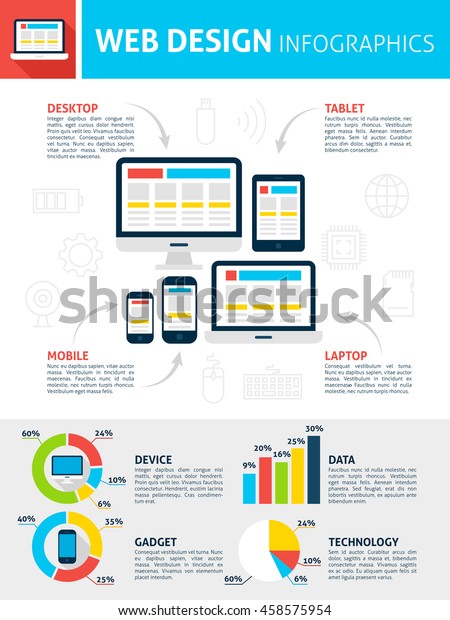The Development Of Web Site Layout: From Past To Existing
The Development Of Web Site Layout: From Past To Existing
Blog Article
Write-Up Written By-Pappas Hyldgaard
In the past, websites were easy and focused on details. Navigation was direct, and style was for desktops. Currently, individual experience is crucial. Data guides styles for easy navigation. Receptive layouts suit different devices. Today, dark setting decreases pressure, and minimalist food selections enhance navigation. Interactive features involve users, and bold visuals attract attention. AI assimilation enhances engagement. See exactly how design has actually developed to boost your on-line trip.
Very Early Days of Web Design
In the very early days of web design, simplicity reigned supreme. Websites were standard, with minimal shades, font styles, and designs. The emphasis was on giving info rather than fancy visuals. Users accessed the web through slow dial-up connections, so rate and performance were essential.
Navigating menus were straightforward, normally located at the top or side of the web page. Web sites were made for computer, as mobile surfing had not been yet prevalent. Content was king, and developers focused on very easy readability over intricate design elements.
HTML was the primary coding language used, and designers needed to function within its restraints. Animations and interactive functions were minimal compared to today's requirements. Websites were static, with little dynamic material or personalized individual experiences.
Surge of User-Focused Style
With the advancement of internet site layout, a change towards user-focused style concepts has come to be progressively famous. Today, producing websites that prioritize individual experience is vital for engaging site visitors and accomplishing organization objectives. User-focused style includes recognizing the requirements, choices, and behaviors of your target market to tailor the site's layout, content, and includes accordingly.
Designers now carry out comprehensive study, such as individual studies and usability testing, to gather understandings and comments directly from individuals. This data-driven approach assists in producing instinctive navigation, clear calls-to-action, and aesthetically enticing interfaces that resonate with site visitors. By placing look at here now at the center of the layout procedure, sites can supply a more individualized and pleasurable experience.
Receptive layout has actually likewise become a crucial aspect of user-focused style, ensuring that sites are enhanced for numerous tools and display dimensions. This versatility improves availability and functionality, satisfying the diverse methods individuals connect with internet sites today. In essence, the rise of user-focused layout indicates a change in the direction of creating digital experiences that prioritize the demands and assumptions of completion individual.
Modern Trends in Web Design
Explore the most recent trends forming web design today. One prominent trend is dark setting layout, using a streamlined and modern-day appearance while decreasing eye strain in low-light atmospheres. Another crucial trend is minimalist navigation, streamlining menus and enhancing individual experience by focusing on essential elements. Integrating https://www.campaignindia.in/article/opinion-top-digital-marketing-strategies-on-zero-budget/476260 -interactions, such as computer animated switches or scrolling effects, can create an extra engaging and interactive site. Responsive style stays essential, ensuring seamless customer experiences across various tools. Additionally, making use of vibrant typography and unbalanced layouts can include aesthetic interest and accentuate certain material.
Integrating AI modern technology, like chatbots for customer assistance or personalized referrals, enhances individual engagement and improves processes. Accessibility has also become a substantial trend, with developers focusing on inclusive style techniques to deal with diverse customer needs. Embracing sustainability by optimizing site performance for rate and effectiveness is one more emerging pattern in web design. Teaming up with customer feedback and data analytics to repeat and boost layout continually is essential for remaining appropriate in the ever-evolving electronic landscape. By accepting these modern-day patterns, you can develop an aesthetically enticing, straightforward website that resonates with your audience.
Final thought
As you assess the advancement of website style from the early days to currently, you can see just how user-focused design has actually ended up being the driving pressure behind modern patterns.
Welcome the journey of adjustment and adjustment in website design, constantly maintaining the user experience at the leading edge.
Tippingpointdigital
Stay existing with the most recent patterns and modern technologies, and never stop evolving your method to produce visually magnificent and user-friendly web sites.
Progress, adjust, and produce - the future of web design remains in your hands.
